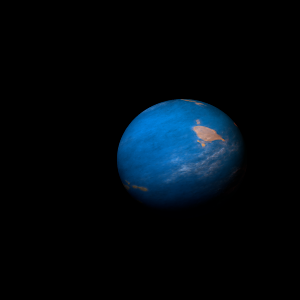|
|
Space Astro
|
Info for exoplanet "Lahynar-rosa"
| Scientific (actual) data |
|---|
| Name | Kepler-800 b |
| Planet status | Confirmed |
| Radius | 0.254 |
| Orbital period | 14.1318 |
| Discovered | 2016 |
| Updated | 2021-02-05 |
| Tconj | 2454980 |
| Publication | Announced on a website |
| Detection type | Primary Transit |
| Alternate names | 2MASS J19061795+4447427 b, K01264.01, KIC 8612847 b, KOI-1264 b, KOI-1264.01, WISE J190617.95+444742.6 b |
| Star name | Kepler-800 |
| Right ascension | 286.58° |
| Declination | 44.8° |
| Mag j | 14.446 |
| Mag h | 14.042 |
| Mag k | 13.916 |
| Star distance | 1049 |
| Star metallicity | -0.09 |
| Star mass | 0.85 |
| Star radius | 0.82 |
| Star age | 4.68 |
| Star temperature | 5315 |
| Star alternate names | 2MASS J19061795+4447427, KIC 8612847, KOI-1264, WISE J190617.95+444742.6 |
| Wikipedia article | Kepler-800 b |
Back
| |
| Fictional info (?) |
|---|
| Suggested name | Lahynar-rosa |
| Planet type | Cold planet |
|
| Atmosphere | Nitric oxide | 44% |
| Xenon | 43% |
| Argon | 11% |
| Water vapor | 0.47% |
| 2H2O | 0.29% |
| Ozone | 0.011% |
| Atmospheric pressure | 1.8 bar |
 |
| No known satellites |
| Google search for Lahynar-rosa |
|
Website by Joachim Michaelis
|
|
|
|